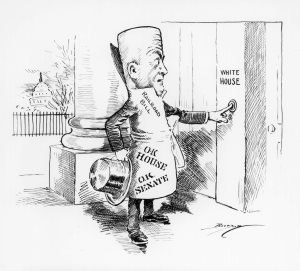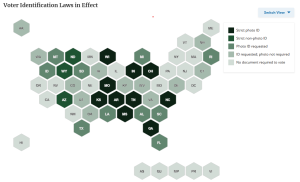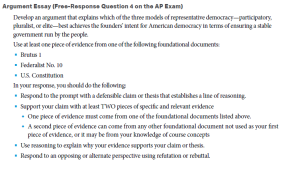 Terri Susan Fine, Ph.D. has been deeply involved with the AP U.S. Government and Politics program. In addition to serving as an endorsed consultant, conducting summer institutes and single and multi-day workshops online and in person, her involvement has also included serving as a reader and scoring leader/table leader. As a member of the Curriculum Design and Assessment Committee (“redesign”) and the test development committee, she has developed and reviewed multiple choice and free response questions included on the national exam. Finally, Terri is active as a senior auditor reviewing proposed syllabi, the last step in the required syllabus approval process.
Terri Susan Fine, Ph.D. has been deeply involved with the AP U.S. Government and Politics program. In addition to serving as an endorsed consultant, conducting summer institutes and single and multi-day workshops online and in person, her involvement has also included serving as a reader and scoring leader/table leader. As a member of the Curriculum Design and Assessment Committee (“redesign”) and the test development committee, she has developed and reviewed multiple choice and free response questions included on the national exam. Finally, Terri is active as a senior auditor reviewing proposed syllabi, the last step in the required syllabus approval process.
Terri’s professional career in higher education has included 34+ years as a professor of political science at the University of Central Florida and as content specialist for the Florida Joint Center for Citizenship, the institute formed to support implementation of the Sandra Day O’Connor Civic Education Act (2010).
Why attend an in-person APSI? Meaningful discussions and collaborations!
Investigating case studies into an understanding of U.S. government and politics is part of the task of an AP U.S. Government and Politics teacher. Each of the following images contribute to a lesson designed to help students gain a better understanding of U.S. government and do well on an AP U.S. Government & Politics test questions.
Tinker versus Des Moines (Iowa) Independent Community School District. The photograph represents a U.S. Supreme Court case required by the course.

At a public school in Des Moines, Iowa, students planned to wear black armbands at school as a silent protest against the Vietnam War. When the principal became aware of the plan, he warned the students that they would be suspended if they wore the armbands to school because the protest might cause a disruption in the learning environment. Despite the warning, some students wore the armbands and were suspended.
The legislative process allows for both the House and Senate to work with each other to ensure that bills must be in exactly the same form when they pass both houses. The debating and voting processes in both chambers differ because of the size of the membership of each chamber, and other factors.

U.S. election laws date back to Article 1 of the Constitution, which gives to states the responsibility of managing elections. Many constitutional amendments and federal laws to protect voting rights have been put into place since then. This visual image presents one power that states alone possess—whether voter identification laws will be required, and which type of identification is sufficient to meet the identification requirement.

AP U.S. Government & Politics – Sample Argument Essay Question



